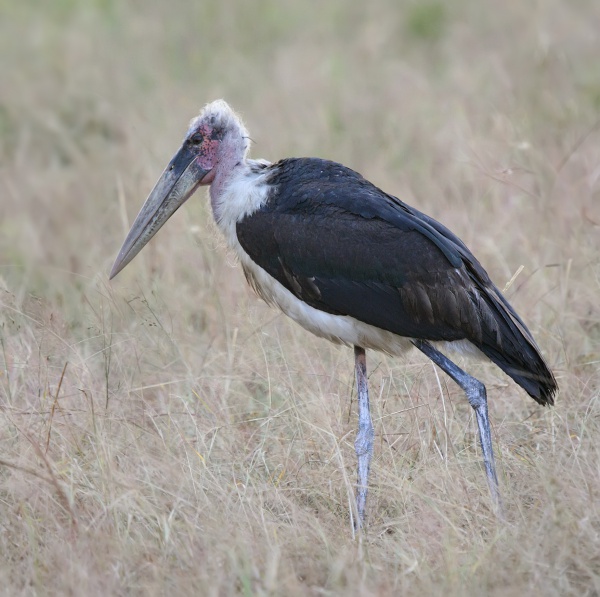Facts About Marabou stork
The Marabou stork is an exceptionally large bird commonly found across Africa, especially near human settlements such as landfill sites. Its distinctive appearance has earned it the nickname "undertaker bird" due to its cloak-like wings, spindly white legs, and a fluffy mass of white feathers on its head.
The name "marabou" originates from the Arabic word "murābit" meaning quiet or hermit-like. Initially, scientists classified this bird in the stork genus Ciconia, but later reassigned it to the genus Leptoptilos. These birds are enormous, with some standing up to 152 cm (about 5 feet) tall and weighing around 9 kg (almost 20 pounds). Their wingspan can exceed 3.7 meters (over 12 feet), making them one of the birds with the largest wingspreads. They have a bare head and neck, a black back, white underparts, a large bill, and a distinctive pink throat pouch.
Marabou storks are social birds that typically breed in colonies during the African dry season. They lay two to three eggs in nests constructed from sticks. While not particularly vocal, they produce a rattling sound with their bills during courtship displays. These birds are scavengers, feeding on carrion, scraps, feces, and occasionally preying on other birds and small animals. By consuming carcasses and waste, they play a crucial role in maintaining environmental cleanliness.
Interestingly, Marabou storks have adapted to feed on human garbage, making them somewhat dependent on these food sources. They have been known to ingest various unusual items, including shoes and metal pieces, which puts them at risk for parasitic infections.
Humans have found uses for Marabou stork feathers, particularly the soft down, which is used to trim clothing and hats and in the making of fishing lures. Occasionally, turkey down serves as a substitute for marabou trimming.

 Eritrea
Eritrea